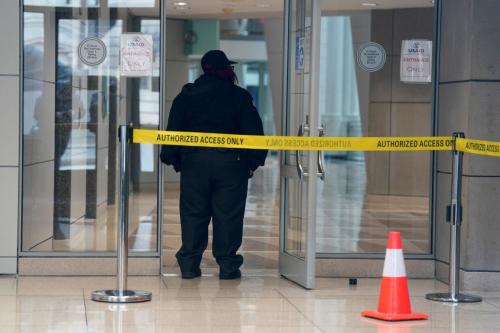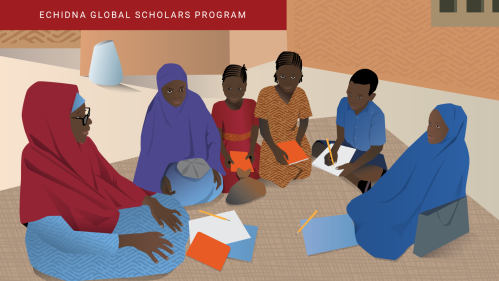Earlier this week, Sasha and Malia toured China with their mother, First Lady Michelle Obama, and their grandmother. This wasn’t a bad way to spend their spring break from Sidwell Friends School, which has one of the oldest and strongest Mandarin programs in the Washington, DC area.
Education and educational exchange were a central theme of Mrs. Obama’s China visit. Both the United States and China share the common goal of building education systems that can prepare future generations of workers with the skills necessary to lead these countries forward in the 21st century. As the First Lady said in her speech at Peking University, “Studying abroad isn’t just a fun way to spend a semester; it is quickly becoming the key to success in our global economy…It’s also about shaping the future of [both] countries and of the world we all share. Because when it comes to the defining challenges of our time—whether it’s climate change or economic opportunity or the spread of nuclear weapons—these are shared challenges.” Without a doubt, one of these shared challenges is also to ensure that all individuals have equal opportunity.
All young people, whether American or Chinese, should have access to the kind of quality education needed to compete and succeed in the global economy. Sadly, our education systems are failing too many children. In China, despite its rapid economic growth, disparities in income have widened in recent years. Extreme poverty plagues 36 million Chinese, many of them living in rural areas and 18 percent of them below the age of 12 (according to the World Bank). In spite of having universal access to primary education (millennium development goal, or MDG, two), the reality for many poor Chinese children is not so bright. In some areas of the country, in particular rural areas, access to high-quality schooling is very limited. Such inequality of opportunity is the result of the country’s highly decentralized fiscal system, lack of accountability and inefficiencies in the service delivery system. In the United States, such inequality is also prevalent. In 2011, one in five public schools was considered high-poverty, meaning that 75 percent of children enrolled in that school qualified for free or reduced-price lunch. In the United States’ own capital city, one in three children is living below the federal poverty line and over a third of high school student fail to graduate. Even for those children who do manage to complete schooling, there are huge disparities in the level of learning experience between the advantaged and disadvantaged.
Evidence shows that for both the United States and China investing in early childhood education is the most effective way to prevent inequality before disparities widen. Not too long ago, Brookings hosted an event together with the China Development Research Foundation (CDRF) that explored the possibilities for collaboration between the US and China on early childhood development (ECD), a topic that is high on the policy agenda for both countries. Madame Liu Yandong, vice premier of the People’s Republic of China, and Hillary Rodham Clinton, former U.S. secretary of state, gave compelling speeches on the importance of ECD programs and their potential for achieving long-term global impact. Both countries should continue their efforts to ensure that its youngest citizens receive a quality early childhood experience.
The United States and China should continue to collaborate on these efforts as well as on other innovative ways of ensuring quality schooling. Teach For America (TFA) is an American non-profit program founded in 1989 whose mission is to “eliminate educational inequity by enlisting high-achieving recent college graduates and professionals to teach”for at least two years in low-income communities throughout the United States. In 2007, the CEO of Teach for America jointly with Teach First, a U.K. based non-profit, founded Teach for All. This effort, which aims to bring to other countries the mission of deploying young talent to teach in underserved communities, currently has 32 partner organizations around the world including Teach For China (TFC). This program recruits outstanding college graduates from China and the United States and trains them to serve as full-time teachers for two years in under-resourced Chinese schools. The recent graduates, called fellows, attend an intensive TFC summer program and receive teacher training based on the “Teaching As Leadership” framework first pioneered by TFA. American participants receive additional Chinese language training. After having completed the program, TFC works with local government partners to place fellows in selected, under-resourced schools that demonstrate student need in Yunnan and Guangdong provinces.
Here at home, the 100,000 Strong Foundation serves as a catalyst to expand and diversify U.S. programs that promote studying abroad in China, including by helping to raise private funds for partner programs such as Americans Promoting Study Abroad (APSA), OneWorldNow!, the China Institute and the Congressional Black Caucus Foundation—all of which are sending underserved high school students to China to study Mandarin and learn more about the country, which is the second largest economy in the world and America’s fastest growing trade partner. The private sector is also stepping up its efforts to ensure increased educational opportunities. Companies such as Caterpillar, Coca Cola and Wanxiang America have supported this effort. Steven Schwarzman, CEO of the Blackstone Group, is creating a year-long Rhodes-like scholarship program at Tsinghua University.
The United States and China cooperate on whole host of issues. Education is one of them. We applaud Mrs. Obama’s focus on education during her trip. As the two governments work to deepen ties between our nations, let’s move to make sure we are reaching our youngest students in communities that are most at risk.
The Brookings Institution is committed to quality, independence, and impact.
We are supported by a diverse array of funders. In line with our values and policies, each Brookings publication represents the sole views of its author(s).




Commentary
Michelle Obama’s Visit to China: Education in the Forefront
March 28, 2014